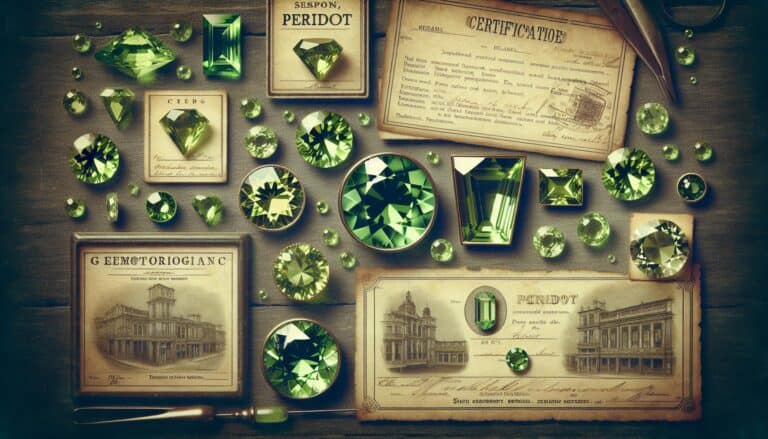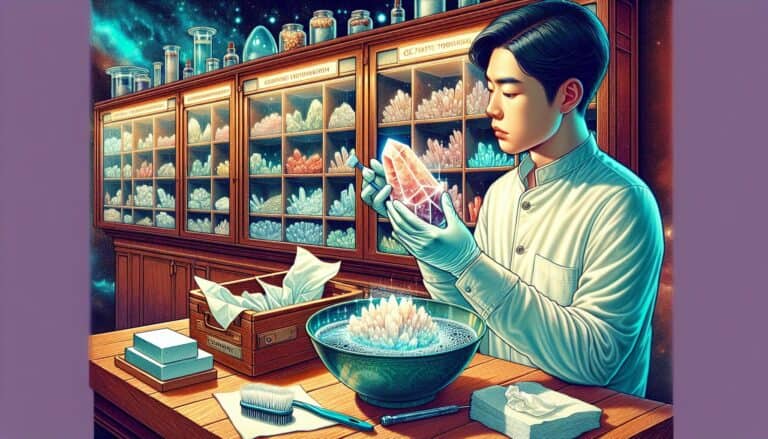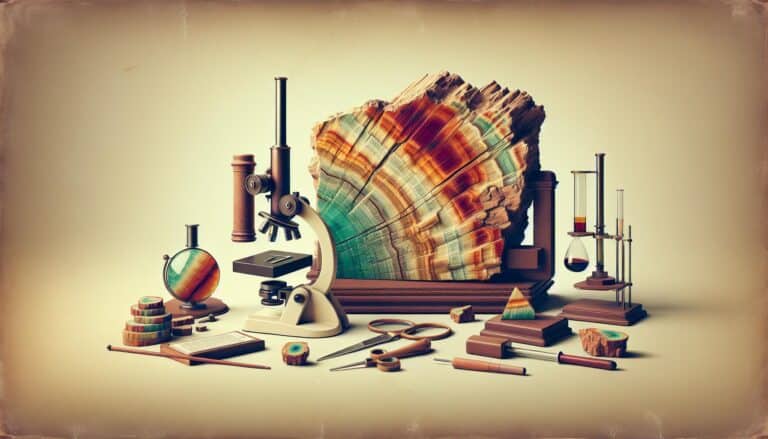Exploring the value of carnelian, you’re diving into a world where beauty meets durability.
This semi-precious gemstone, known for its captivating shades of orange and red, is more than just an eye-catcher. It’s a piece of ancient history, worn and treasured through the ages.
You might wonder how much your carnelian is worth. It’s not just about the color or clarity; factors like size, cut, and even the stone’s origin play a crucial role in its value. Whether you’re a collector, a jewelry enthusiast, or simply curious, understanding carnelian’s worth is a journey worth taking.
The market for carnelian is as varied as the stone itself. From affordable pieces to rare, high-quality specimens, there’s a spectrum of prices.
Let’s delve into what determines the worth of this timeless gemstone and how you can gauge the value of your own carnelian treasures.
Carnelian’s value hinges on color, clarity, cut, and rarity. The most sought-after carnelians display vibrant red to orange hues with high transparency. Market demand and availability also play key roles in pricing. When buying, ensure authenticity through certification and choose reputable dealers for quality assurance.
What Is Carnelian?
Carnelian is a captivating gemstone that you might have heard of for its vibrant color and historical significance. Derived from the mineral chalcedony, it belongs to the quartz family and is revered for its glassy luster and transparency. Its color spectrum includes hues of orange, red, pink, and brown, and it’s this range that adds to the stone’s allure and value.
Ancient civilizations from the Egyptians to the Romans prized carnelian as a stone of nobility and power — it was often used in signet rings for sealing important documents. Today, it still carries an air of prestige while remaining a popular choice for jewelry and decorative items.
Varieties and Characteristics
The diverse tones of carnelian are typically a result of iron oxide impurities within the stone. The more iron present, the deeper and more intense the color. More transparent pieces are often deemed higher in quality with those exhibiting an even saturation being particularly sought after. There are two primary varieties that you’ll encounter in the market:
- Sard: Often darker in color, leaning towards browns and deep oranges
- Carnelian proper: Known for its bright orange to red coloring
Both varieties can be captivating, but carnelian proper is usually more popular in the consumer market. Its translucency can range from opaque to almost clear, and this variance can also influence its perceived value.
Carnelian’s hardness on the Mohs scale is around 6.5 to 7, making it durable enough for various jewelry applications without being overly susceptible to scratches. Its tenacity and resistance to weathering make carnelian a lasting choice for pieces meant to endure daily wear.
Sources and Synthetics
Natural carnelian can be found in many parts of the world with prominent sources being India, Brazil, Madagascar, and Uruguay. The origin doesn’t typically affect the value to a great extent — it’s the quality of the individual piece that matters most. Be mindful of synthetic versions, as advanced treatments can enhance lesser-quality stones, mimicking the appearance of natural carnelian. When shopping for carnelian, always verify authenticity and quality to ensure you’re getting the real deal.
Carnelian Prices: Factors That Affect Value

When you’re looking into the value of carnelian, it’s crucial to consider various factors that can drastically alter its worth. Just like any other gemstone, carnelian is not just priced on beauty alone. Understanding these factors helps in making informed decisions whether you’re buying for personal enjoyment or investment purposes.
Color, Clarity, and Cut Quality
Carnelian boasts a spectrum of hues from pale orange to deep red-brown, with vibrant oranges and reds typically being the most sought after. When assessing value, color reigns supreme, with even a slight variation in tone or saturation making a significant price difference. Clarity is another vital factor; stones with fewer inclusions or blemishes fetch higher prices. While carnelian is often found with a high degree of transparency, stones that display exceptional clarity are undoubtedly more valuable.
The cut of the carnelian also impacts its value. A high-quality cut enhances the stone’s natural beauty, maximizing its luster and color distribution. Expertly cut carnelians that exhibit a mirror-like polish are prized possessions in the gem market. Symmetry and proportion play their parts in determining the gem’s allure and hence, its value.
Market Demand and Availability
Market dynamics greatly influence carnelian’s worth. With trends in gemstone jewelry shifting regularly, the demand for carnelian can fluctuate, thereby impacting its price. When demand for this enticing stone rises, so do the prices, especially for high-quality specimens.
Another consideration is the availability of carnelian. Although it is found in multiple locations around the world, fine-quality carnelian is less common. Localities known to produce exceptionally vibrant and translucent carnelians often see their gemstones fetching a higher price on the global market due to their superior quality and desirability.
Keep in mind, market demand and availability can also vary by region. In areas where carnelian is culturally significant, you might find prices to be higher due to its local demand. Conversely, in markets where carnelian is plentiful, prices may be more competitive.
Remember, when valuing carnelian, it’s not just about the current market price. You’ve got to consider the stone’s inherent qualities and historical appeal, which often transcend the fluctuating trends of the gemstone marketplace.
Understanding Carnelian: A Rare Gem

Carnelian’s value is profoundly influenced by its rarity. Not all orange gemstones grace the market with the same regularity, and carnelian stands out for its unique presence among them.
The Rarity of Carnelian
Unlike diamonds or rubies, carnelian doesn’t enjoy the limelight in the mainstream jewelry market. Its scarcity often dictates its worth. Originating from limited sources, high-quality carnelian is a coveted item for collectors and gem enthusiasts. Top-tier carnelian features deep, vibrant shades of orange or red and shows little to no inclusions.
- Sources: Brazil, India, Madagascar, and Uruguay are known for their fine carnelian deposits.
- Trend impact: Fashion trends can spur sudden demand, influencing its availability and market price.
Origins and Characteristics
Carnelian’s origins play a critical role in its allure. It is primarily found in volcanic rocks and ancient lava streams, where the natural processes of the Earth have nurtured them for centuries. The iron oxide content in carnelian gives it its characteristic color, which can range from pale orange to a deep, almost blood-red hue. The color saturation and uniformity are pivotal in assessing its quality.
- Hardness: Ranks a 6-7 on the Mohs scale, making it durable for everyday wear.
- Translucence: The gem can vary from completely opaque to slightly translucent.
- Color: A spectrum from soft peach to bold fiery orange-red.
- Historical significance: Carnelian has been valued since ancient times for both jewelry and carvings.
Carnelian Grading and Valuation
The Grading System for Carnelian
When you’re looking to determine how much carnelian is worth, understanding its grading system is crucial. Unlike diamonds, which have a universally accepted grading system, carnelian doesn’t adhere to such standardized criteria. However, gemologists typically evaluate its quality based on factors such as color saturation, transparency, and craftsmanship of the cut.
Color is of utmost importance; top-grade carnelians are known for their deep, vibrant red to reddish-brown hues. Transparency also influences the value; the more transparent a stone, the higher its value tends to be. Yet, some collectors prize stones with cloudier appearances for their unique look. Lastly, a well-executed cut can greatly enhance the stone’s luster and color, thereby increasing its value.
Certification and Appraisal
When you have a piece of carnelian jewelry or a loose stone, it’s often beneficial to get it certified or appraised to affirm its quality and value. Professional certification from a reputable gemological laboratory can provide a detailed report on the stone’s characteristics and authenticity. This documentation is particularly helpful if you’re considering selling your carnelian or having it insured.
Appraisal services go a step further by offering an expert’s estimation of the stone’s monetary worth. An appraiser will consider the carnelian’s qualities, current market trends, and overall condition in their valuation. They’ll also take into account the historical significance and rarity, especially for antique pieces or stones with provenance. Remember, the appraiser’s expertise and reputation can impact the credibility and acceptance of the appraisal in commercial transactions.
To confirm the legitimacy of the certification and appraisal you receive, make sure the institutions or experts are recognized in the gemstone market. This guarantees that the assessment of your carnelian’s worth is both professional and respected.
Current Market Trends in Carnelian Pricing
When considering the purchasing or selling of carnelian, understanding the market trends is crucial. These trends can dictate the price fluctuations and availability of this alluring gemstone. Current market trends show a robust interest in carnelian, especially in markets that value natural and historical gemstones. As demand for organic, authentic pieces rises, the price of high-quality carnelian follows suit, further influenced by rarity and specific color preferences among buyers.
Fashion and jewelry industry developments have a direct impact on carnelian pricing. Carnelian’s earthy tones fit well with bohemian and vintage styles, which have seen a resurgence in recent years. This demand hikes up prices, especially for pieces that can be verified as naturally sourced and untreated. Considering the fashion trends when shopping for carnelian can help you gauge when and where prices might peak.
One of the notable aspects affecting carnelian’s value is the emerging markets appeal. Countries like China and India have a long-standing cultural connection to carnelian, using it in traditional jewelry and carvings. With economic growth in these regions, there’s a surge in purchasing power directed toward gems that hold cultural significance. Carnelian is no exception, and sellers might experience an upswing in prices as these markets expand their consumption.
| Factor | Impact on Pricing |
|---|---|
| Demand for natural gemstones | Increases price |
| Bohemian and vintage fashion trends | Raises demand |
| Economic growth in emerging markets | Boosts consumption |
It’s also worthwhile to monitor the impact of technological advances on carnelian pricing. Enhanced mining techniques have improved the extraction and refinement processes, potentially increasing the availability of quality carnelian. However, some purists seek out stones with minimal enhancement, which can heighten the allure and value of raw, unprocessed specimens.
Keep an eye on auction results and dealer’s catalogs for a glimpse into the fluctuating values. These resources often provide a snapshot of what collectors and enthusiasts are willing to pay, giving insight into the current market pulse of carnelian gemstones. With this knowledge, you’ll be better equipped to navigate the carnelian market, whether you’re looking to buy or aiming to sell.
The Most Expensive Carnelian
When investigating the upper echelons of carnelian value, you’ll find that exceptional pieces can fetch astounding prices. High-end carnelian often comes from historical pieces or exceeds usual quality expectations. Collector’s items, such as carnelian with provenance linking it to ancient civilizations or worn by historical figures, can command premium prices.
Notably, carnelian’s worth is significantly influenced by its size and the artistry involved in its crafting. Artifacts and jewelry containing large, meticulously carved carnelians can be priced much higher than simpler counterparts. For example, a carnelian intaglio or a cameo, which showcases intricate designs or portraits, greatly enhances its allure and monetary value.
Recorded Auction Achievements
- Sotheby’s and Christie’s have seen remarkable carnelian pieces sold for tens of thousands of dollars.
- Limited-edition designer jewelry incorporating carnelian, crafted by renowned brands or artists, also often see high valuations.
- Provenance and historical significance
- Size and weight of the gemstone
- Quality of artistry in the gemstone’s cut and setting
- Rarity of the carnelian specimen or piece
It’s crucial for collectors and investors to keep an eye on market shifts. These can include increases in demand due to fashion trends or cultural significance. Additionally, understanding the geographical source of the carnelian can add to the narrative of the stone’s journey, further elevating its worth.
Keep in mind that the rarity of the stone can also play a significant role; for instance, the unique red-orange hue known as Sard, which is often more expensive due to its rarity compared to the common orange shades. It’s essential to monitor auction results and stay informed with the latest market news to spot potential upticks in the value of these extraordinary carnelian pieces.
Buying Carnelian: Tips and Recommendations
When you’re looking to add a piece of carnelian to your collection, it’s crucial to know where to shop and how to ensure the authenticity and value of your purchase. You want to make an informed choice and avoid common pitfalls that could lead to disappointment.
Where to Purchase High-Quality Carnelian
To secure high-quality carnelian, your best bet is to:
- Scope Out Reputable Dealers: Look for jewelers and gemstone dealers with excellent reviews and a good reputation in the market.
- Attend Gem Shows: These events gather vendors and collectors from all over and offer the opportunity to see a diverse range of carnelian up close.
- Online Marketplaces: Platforms like Etsy or specialized gemstone websites can be great sources, but ensure the seller provides ample documentation and has positive feedback from previous buyers.
Certified Gemstone Stores: Brick-and-mortar stores often have certified gemstones, and the in-person experience allows you to inspect the carnelian directly.
Remember, pricing can vary depending on the source, so research multiple venues to understand the standard market rate.
Ensuring Authenticity and Value
Maintaining confidence in your purchase means verifying both authenticity and value:
- Ask for Certification: Request a certificate of authenticity or a grading report from a recognized gemological lab.
- Seek Professional Appraisal: If you’re making a significant investment, consider having the stone appraised by an expert.
Inspect the Gemstone: Pay attention to the color saturation, transparency, and cut used in the carnelian, as these factors influence its worth.
Beware of Imitations: Familiarize yourself with common carnelian substitutes to avoid accidentally buying a less valuable stone. Look for telltale signs like unnatural color patterns or a plastic-like appearance.
By carefully selecting your purchase source and verifying the stone’s quality, you can ensure that you’re getting genuine carnelian worth your investment. Stay attuned to market trends and expert opinions, as this knowledge could significantly benefit your purchase decisions.
Conclusion: Buying & Selling Carnelian
Determining the true worth of carnelian requires a keen eye and a bit of savvy.
By focusing on the gemstone’s color saturation, transparency, and cut, you’ll be better equipped to assess its value. Remember, the authenticity of your carnelian is paramount. Seeking out reputable dealers and insisting on certification can save you from costly imitations. As you navigate the market, keep in mind that an informed buyer is a smart buyer. Stay updated on trends and seek expert advice when needed.
With these strategies, you’re set to find a piece of carnelian that’s not only beautiful but also a worthy investment.



![Montana Rockhounding [year]: Best Locations & Treasures](https://observationhobbies.com/wp-content/uploads/2024/01/Montana-Rockhounding-768x525.png)
![NH Rockhounding Sites in [year]: Spots & Treasures](https://observationhobbies.com/wp-content/uploads/2024/01/7XT_yRWhzhwbBRthKOCkS-768x439.jpg)


